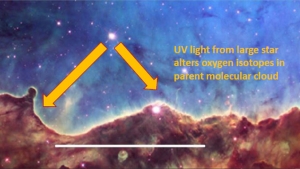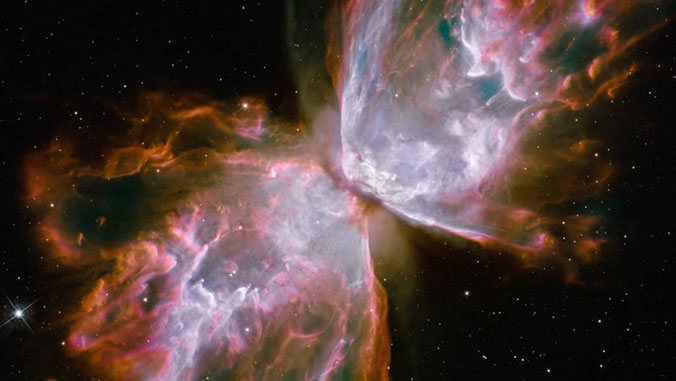In the search to discover the origins of our solar system, an international team of researchers has compared the composition of the sun to the composition of the most ancient materials that formed in our solar system: refractory inclusions in unmetamorphosed meteorites.
Source: University of Hawai’i News
By analyzing the oxygen isotopes (varieties of an element that have some extra neutrons) of these refractory inclusions, the research team has determined that the differences in composition between the sun, planets and other solar system materials were inherited from the protosolar molecular cloud that existed even before the solar system. Researchers want to understand how ultraviolet light affected organics in the solar nebula and/or molecular cloud, which is directly relevant to the inventory of organics for the origin of life on Earth. The results of the study were published in Science Advances.
“It has been recently demonstrated that variations in isotopic compositions of many elements in our solar system were inherited from the protosolar molecular cloud,” said lead author Alexander Krot, researcher at the University of Hawaiʻi at Mānoa Hawaiʻi Institute of Geophysics and Planetology (HIGP). “Our study reveals that oxygen is not the exception.”
Molecular cloud or solar nebula?

When scientists compare oxygen isotopes 16, 17 and 18, they observe significant differences between the Earth and the sun. This is believed to be due to processing by ultraviolet light of carbon monoxide, which is broken apart leading to a large change in oxygen isotope ratios in water. The planets are formed from dust that inherits the changed oxygen isotope ratios through interactions with water.
What scientists have not known is whether the ultraviolet processing occurred in the parent molecular cloud that collapsed to form the proto-solar system or later in the cloud of gas and dust from which the planets formed, called the solar nebula.
To determine this, the research team turned to the most ancient component of meteorites, called calcium-aluminum inclusions (CAIs). They used an ion microprobe, electron backscatter images and X-ray elemental analyses at HIGP’s Cosmochemistry Laboratory to carefully analyze the CAIs. They then incorporated a second isotope system (aluminum and magnesium isotopes) to constrain the age of the CAIs, making the connection—for the first time—between oxygen isotope abundances and mass 26 aluminum isotopes.
From these aluminum and magnesium isotopes, they concluded that the CAIs were formed about 10,000 to 20,000 years after the collapse of the parent molecular cloud. “This is extremely early in the history of the solar system,” said James Lyons, an associate research professor at Arizona State University. “So early that there would not be enough time to alter oxygen isotopes in the solar nebula.”
Source: University of Hawai’i News

































Leave a Comment
You must be logged in to post a comment.